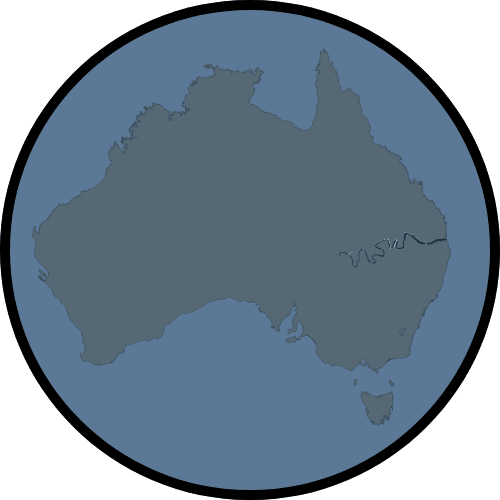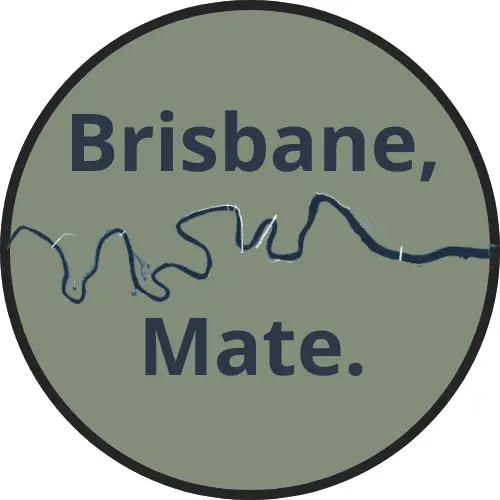
Are there Bull Sharks in the Brisbane River? This question has been a topic of much debate and speculation among locals and tourists alike. Known as one of the largest rivers in Australia, the Brisbane River attracts people for various recreational activities. However, concerns about the presence of Bull Sharks have raised questions about the safety of these waters.
In this article, we’ll tell you all you need to know about what danger lurks beneath in the depths of the Brisbane river.


Key Takeaways
– Bull sharks inhabit the Brisbane River.
– Bull sharks adapt to both freshwater and saltwater, known for their aggression and size.
– Bull shark sightings are more common near the river mouth.
– Safety precautions include swimming with others and avoiding risky areas.
Are There Bull Sharks in the Brisbane River?
Yes, bull sharks have been known to inhabit the Brisbane River in Australia. Their presence in the river is a well-documented fact, with occasional sightings and incidents reported over the years.
Bull Sharks are known for their ability to tolerate both fresh and saltwater environments, making them adaptable to rivers like the Brisbane. With their aggressive nature and impressive size, they have gained notoriety as one of the most dangerous shark species.
Bull sharks: habitat and Behaviour
Bull sharks, scientifically known as Carcharhinus leucas, are a unique species of sharks that have earned their reputation as formidable predators. They are found in warm coastal waters and are known to inhabit rivers, estuaries, and even freshwater lakes. This adaptability is due to their ability to control the concentration of salt in their bodies through a process called osmoregulation.
Bull sharks can grow up to 11 feet long and weigh over 500 pounds, making them a force to be reckoned with. They have a stocky build and broad, flat snouts, which are ideal for navigating through shallow waters and capturing prey. Their diet consists of various fish species, turtles, dolphins, and even other sharks. With their powerful jaws and sharp teeth, they can deliver devastating bites.
Bull shark sightings in the Brisbane River
While the presence of Bull Sharks in the Brisbane River is not uncommon, their numbers are relatively low. There have been occasional sightings and reports of Bull Sharks in the river, but they are not considered a major threat. Most of these sightings occur in the lower reaches of the river, closer to the river mouth, where the salinity levels are higher.
One of the reasons for the occasional presence of Bull Sharks in the Brisbane River is their migratory behaviour. They are known to move between coastal and estuarine environments in search of food and suitable breeding grounds. During their migration, they may venture into the Brisbane River, especially during periods of heavy rainfall when the river’s salt levels are lower.

Factors contributing to bull shark presence in the Brisbane River
Several factors contribute to the potential presence of Bull Sharks in the Brisbane River. Firstly, the river’s proximity to Moreton Bay, a large bay connected to the ocean, allows for the possibility of sharks entering the river system. Secondly, the river’s salinity levels can fluctuate, attracting Bull Sharks during times when the salt levels are suitable for their survival.
Another factor that may attract Bull Sharks to the Brisbane River is the presence of fish species that serve as their prey. The river is home to a diverse range of fish, including mullet, bream, and various other species that sharks find appealing. These fish provide a source of food for Bull Sharks, making the river an attractive hunting ground for them.
Safety measures and precautions for river users
Now we don’t recommend swimming in the Brisbane River. There is a reason why it’s called the brown snake after all. However, if you must, or do fall in you need to consider bull sharks.
While the presence of Bull Sharks in the Brisbane River is relatively low, it does seem to be growing and it’s important to exercise caution and adhere to safety guidelines when enjoying water activities in the river.
Here are some safety measures and precautions to consider:
Be aware of your surroundings:
Before entering the water, take a moment to observe the area for any signs of shark activity. Look for schools of fish jumping out of the water or birds diving into the river, as these can indicate the presence of predators.
Avoid swimming alone:
It’s always safer to swim with a buddy or in a group. In case of an emergency, having someone nearby can make a significant difference.
Stay away from river mouths and deep channels:
Bull Sharks are more likely to be found in these areas, especially where the salinity levels are higher. Avoid swimming or engaging in water activities near these locations.
Do not swim during dusk or dawn:
Sharks are more active during these times, so it’s best to avoid swimming when visibility is low.
Follow local signage and warnings:
Pay attention to any signs or warnings provided by local authorities. They are in place to ensure your safety.
Remember, while the risk of encountering a Bull Shark in the Brisbane River is minimal, it’s always better to be safe than sorry. By following these safety measures, you can enjoy your water adventures with peace of mind.
Other shark species found in the Brisbane River
While Bull Sharks may be the most notorious shark species associated with the Brisbane River, they are not the only sharks found in these waters. The river is home to a variety of shark species, each with its own ecological niche and behaviour.
One such species is the Australian freshwater sawfish (Pristis microdon), a critically endangered species that can grow up to 6 meters in length. These impressive creatures are adapted to freshwater environments and are occasionally spotted in the upper reaches of the Brisbane River.
Other shark species commonly found in the river include the common stingray (Dasyatis pastinaca) and the various species of catsharks (family Scyliorhinidae). These smaller species are less likely to pose a threat to humans but are nonetheless fascinating inhabitants of the river ecosystem.
Is it safe to swim in Brisbane water?
Swimming in Brisbane’s waters can be safe, provided you follow guidelines and warnings. Beaches with lifeguard patrols are generally safe, but be cautious of rips and marine life. Swimming in the Brisbane River is not recommended, and coastal areas may have changing tides and marine creatures. Public pools are safe for swimming. Always adhere to local safety recommendations and check water quality information before swimming.
Are there bull sharks in Australian lakes?
Bull sharks are known to inhabit Australian lakes, particularly in freshwater systems and estuaries connected to the sea. They are adaptable to various water conditions, and their presence in lakes and rivers has been documented in some cases. However, their numbers and frequency in Australian lakes can vary.
How Many Bull Sharks Are There In the Brisbane River?
There is thought to be between 500-3000 bull sharks living in the Brisbane river. The conditions make it ideal for the sharks to thrive.
Bull Sharks in The Brisbane River
While Bull Sharks do occasionally inhabit the Brisbane River, their numbers are relatively low, and the risk of encountering them is minimal. However, it’s essential to remain vigilant and adhere to safety measures when enjoying water activities in the river.
Local authorities and scientific organisations continue to study and monitor the presence and behaviour of Bull Sharks in the Brisbane River. Ongoing research and public consultation are crucial for striking a balance between conservation efforts and public safety.






